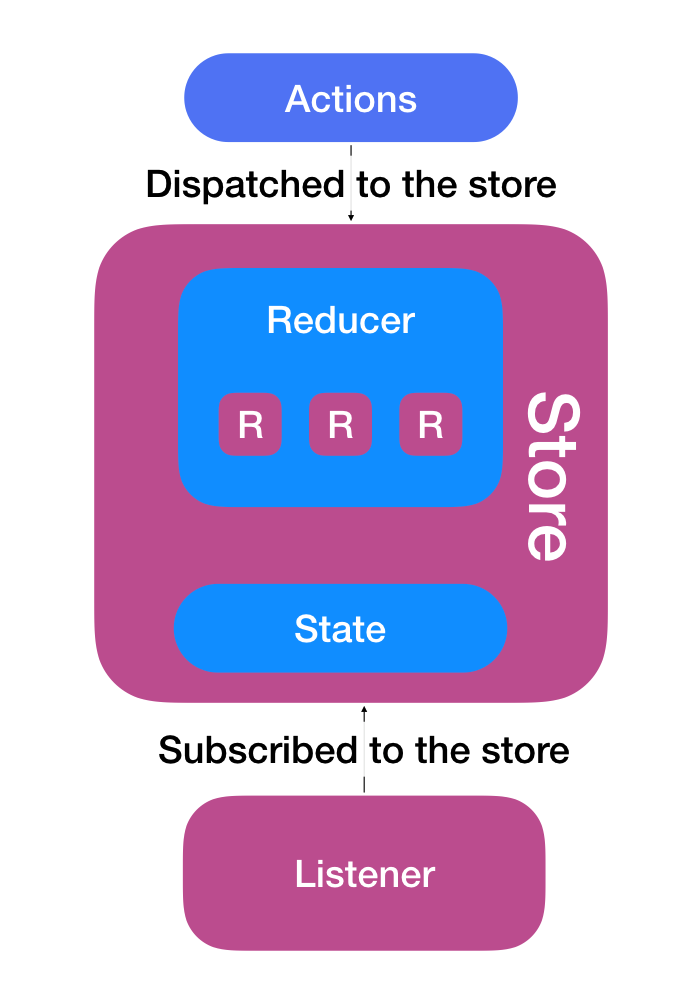Store
The Store is the glue component that combines all other Suas components:

- Each application has one store only.
- The store contains the app state (or states)
- It also contains the app reducer (or combined reducers)
- Actions are dispatched to it. These actions will eventually cause state changes.
- Listeners are attached to the store. When state changes, these listeners are notified.
There are three steps to using the store:
- Creating a store.
- Dispatching actions.
- Listening for state changes.
Creating a store
We start by creating a store. The create store takes in the reducer (or group of reducers) and an optional list of middlewares.
In the todo app example we create a store with the TodoReducer and the LoggerMiddleware :
let store = Suas.createStore(reducer: TodoReducer(),
middleware: LoggerMiddleware())
val store = Suas.createStore(TodoReducer())
.withMiddleware(LoggerMiddleware())
.build()
Store store = Suas.createStore(new TodoReducer())
.withMiddleware(new LoggerMiddleware())
.build();
Other parts of your application need to get a hold of this created store in order to use it.
It is your responsibility to pass the
storeto your views. Some options are:
- Exposing
storeas a global singleton constant.- Using dependency injection to inject
storein your views.
Note on more advanced usages
If your application contains multiple screens that are not logically or functionally tied; for example, in your todo app you might have a settings screen. In this case, instead of having a single reducer with two responsibilities we can instead combine to sub reducers and have a more modular reducer structure. Head to applications with multiple states to read more.
Dispatching actions
When some event occurs, such as tapping a button in a view or a network request has succeeded we create actions and dispatch them to the store. Dispatching Actions is the only way to update the application state that is held within the store.
store.dispatch(action: AddTodo(text: "New Todo"))
store.dispatchAction(AddTodo(text = "New Todo"))
store.dispatchAction(getAddTodoAction("New Todo"));
The AddTodo action is eventually sent to the reducer by the store.
Listening for state changes
Finally, to get updated when the state changes, we need to add listeners to the store.
// Adding a listener
store.addListener(forStateType: TodoSettings.self) { newState in
// Get called when the state changes
}
// Adding a listener
store.addListener(TodoList::class.java) { oldState, newState ->
// Get called when the state changes
}
// Adding a listener
store.addListener(TodoList.class, (oldState, newState) -> {
// Get called when the state changes
});
We will cover the listeners in more depth in the next section .
What's Next
Now that we created the store that joins all Suas components, it's time to add listeners to the store.
Related Topics
Also, check:
List of example applications built with Suas
Updated over 6 years ago
